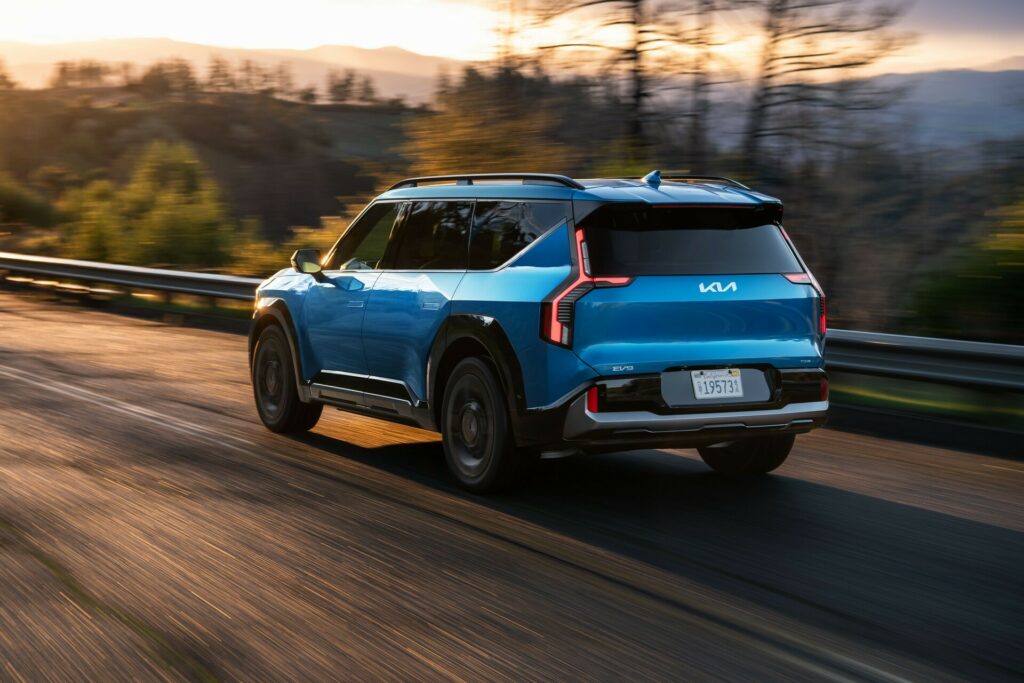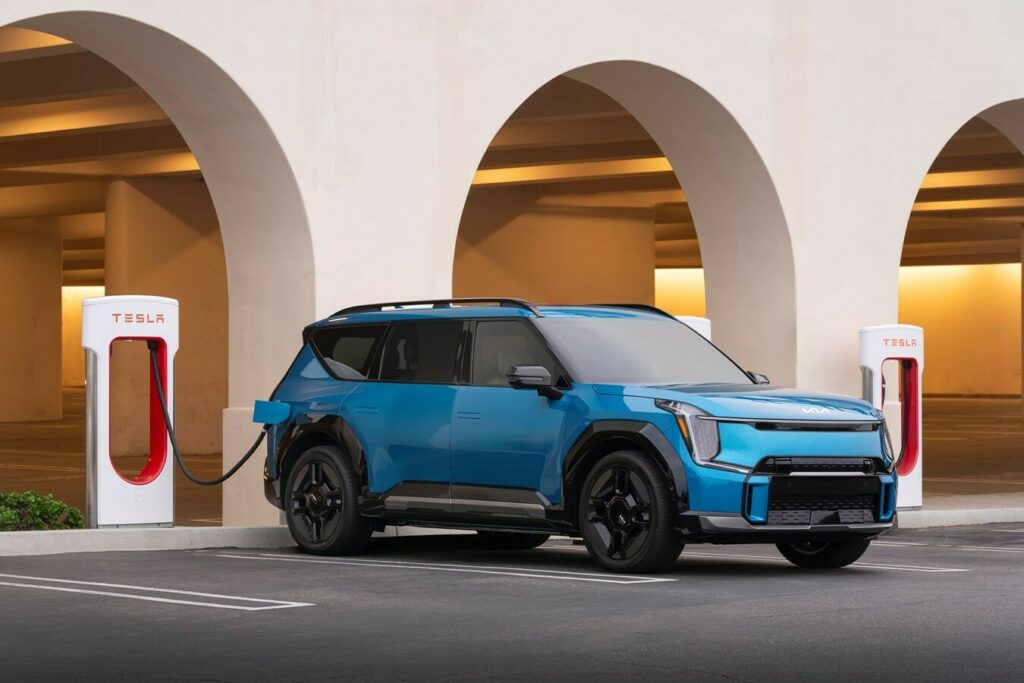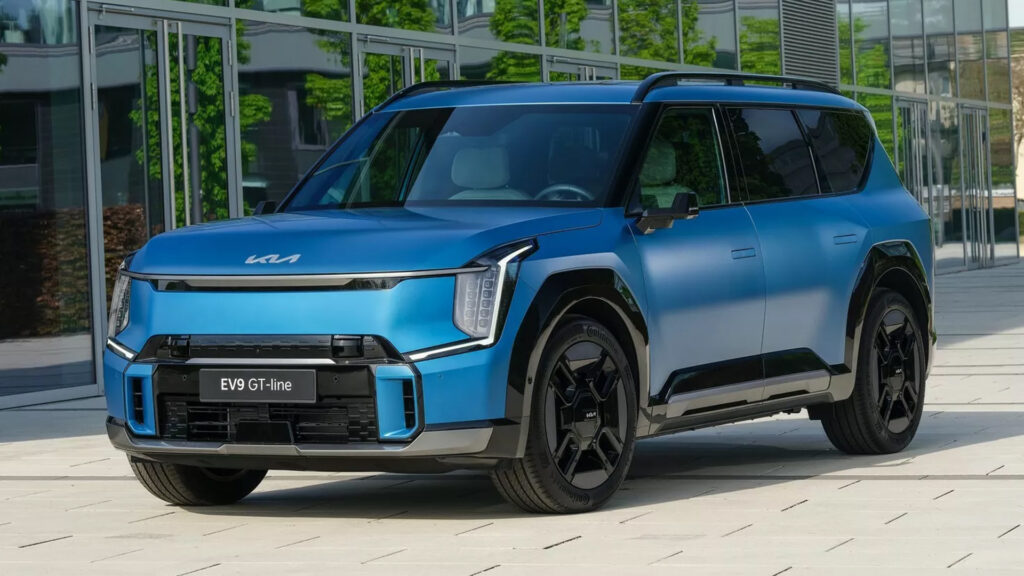- The EV9 is currently only eligible for a $3,750 EV tax credit because of its overseas battery pack.
- U.S. production of the electric three-row SUV started several months ago.
- Kia’s local COO has also warned of a potential administration change impacting the credit.
Kia has started building the all-electric EV9 at its plant in West Point, Georgia, but because of the intricacies of the $7,500 federal EV tax credit, it is not in any rush to ramp up production.
According to the chief operating officer of Kia America, Steve Center, the rules to qualify for the full tax credit are complex, particularly in regards to the assembly of battery packs. In the case of the EV9, it is only eligible for $3,750 of the tax credit when purchased new, because its battery does not yet meet eligibility criteria.
Review: 2024 Kia EV9 GT-Line Is The Ultimate Family Electric SUV
Individuals looking to pick up the keys to a new EV9 while benefiting from the full tax credit must lease the seven-seat electric SUV. But, there’s hope on the horizon for those who want to buy one outright.
In addition to upgrading its West Point plant to accommodate the EV9, the Hyundai Motor Group continues construction of a $7.6 billion EV factory and battery plant in Bryan County, Georgia. This site will start building the Hyundai Ioniq 5 from next month, but the battery side of the site won’t come online until roughly a year later. Kia has committed to switching the EV9 to locally-built batteries, although Auto News says it has not specified if these batteries will come from the Bryan County site, or be sourced from elsewhere.
While speaking about the tax credits in a recent interview, Center noted that the impending election could impact their future.

“What will impact consumer demand is when you have a very strong policy reversal,” he said. “If the administration changed, and the $7,500 tax credits were eliminated, that would impact a lot of middle class and below buyers.”
As it stands, the Kia EV9 has been selling well, shifting 13,874 units during the first eight months of the year in the U.S.




